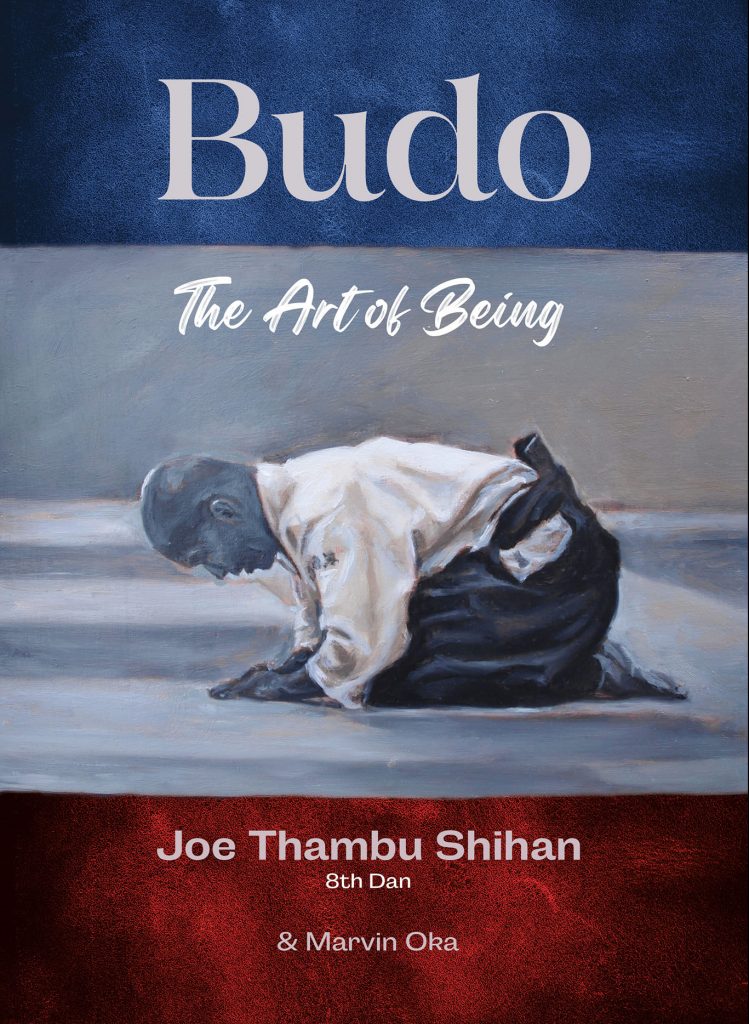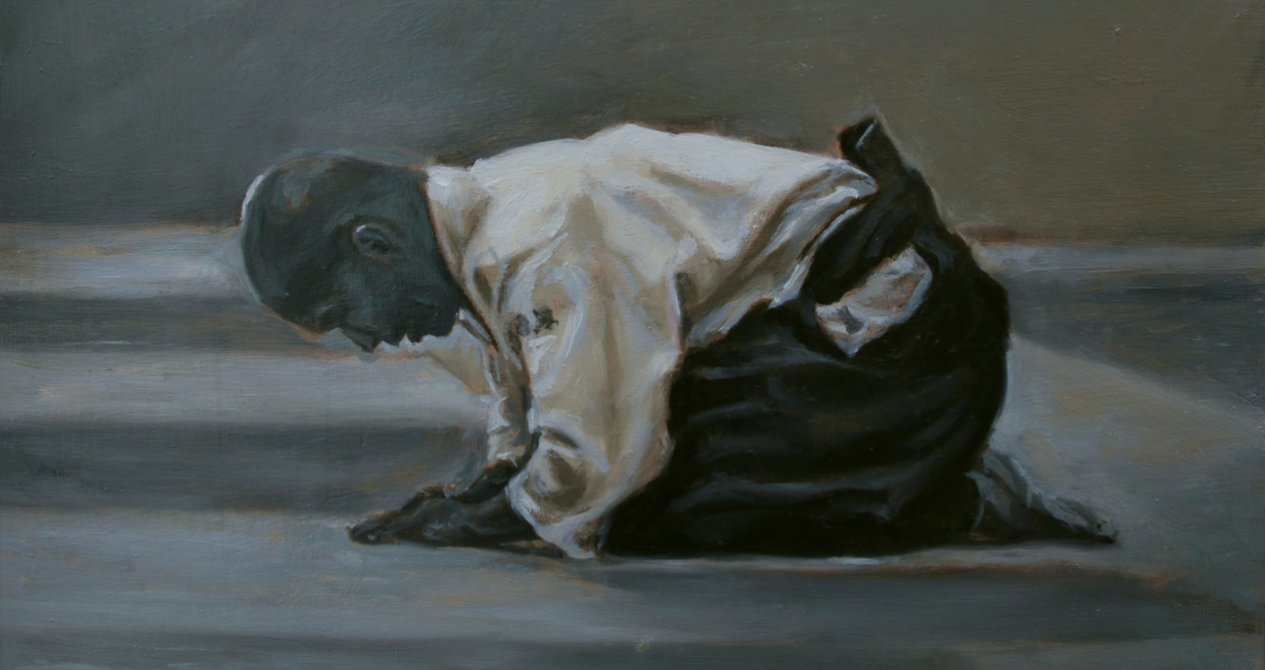BUDO
“The Art of Being”
The new book by Joe Thambu with Marvin Oka!
Book launch April 29th… stay tuned!


OUR PLEDGE
Aikido Shudokan takes great pleasure in announcing that all profit from the first 24hrs of sales from BUDO “The Art of Being”, will go towards the refurbishment of the Seremban Dojo, Malaysia. Our spiritual home. This is the place where it all began for Joe Sensei and holds both historical and emotional value for many people. Mr. Rob Rosa and Innotec have proudly announced that they will donate $10 for every book sold in the first 24hr period. So please buy this book in the alloted time and help a historical dojo get a truly needed makeover.A preview from the authors and some insights into how and why it was conceived.
Emotional Intelligence
When growing up, I thought martial arts was all about technique and that was what was all important. Now, I think it’s about building your emotional intelligence and enhancing your spirituality. I’m not talking about anyone else’s idea of spirituality, but rather it’s about Budo helping you to be a strong person physically, mentally, emotionally, and spiritually. It’s about Budo helping you be the best that you can be. This is why I think that what this book has to offer can help anyone in any walk of life.
Please don’t take what I say in this book verbatim. These are only my experiences. I’d ask that you put your own slant or take onto what I’ve expressed in these pages. This is important because I believe a big problem in martial arts has to do with ‘Being’. Learning martial arts is not just emulating and wanting to be like your teacher but learning from your teacher so you can be the best that you can be, based on what they teach you. It’s not about wholesale copying of your teacher’s ideas and actions. It’s more about taking what they’ve given you and making it yours. I think that’s probably the essence of developing an authentic way of Being, otherwise you’re being someone else.
While some of the things I’ve said in this book have indeed been previously told to me, I’ve pondered on it and come up with my own take on it. I admit that when I was younger, I sometimes took on what teachers told me wholesale and at face value. But over the years, I’ve thought about it and come up with my own slant on these things that I was taught. Some of my views have come from within, others from years of training, and some from self-realisation. I don’t think anything is magical and mystical,though, it’s just my way of saying things. Other teachers may say the same things or have the same idea, but we may say it differently. This is good because sometimes we need to hear the same lessons from a different source or from someone with a different take on it to appreciate it.I think people who tend to be good in anything, whether in martial arts or any other endeavour, actually take a lot of pleasure and joy in learning. Maybe not the kind of learning of how most people think about it from their days at school but learning in your own way. Once you take a lot of joy in learning, then you can start to learn from anyone. You can even watch someone bake bread and think, ‘wow, that was effortless the way they moved!’, and you learn from that. There’s a joy in learning from that, a very simple but true joy of learning.
I think that in Aikido, we can learn from anyone and in any situation.For example, we use our partner to better ourselves and once we better ourselves, we then use that to control the partner or to train at a higher level. We use a global perspective to fix a local issue, and then we use a local perspective to fix a global issue. We’re learning from the interaction of global and local, or between my partner and I. As my partner gets better,I have to get better. As I use my partner’s reactions to control myself, I use my reaction to control my partner. I think this is what Budo is, and what,in essence, my training has been about. It’s about using things around you as a learning tool, a dojo. As Inoue Sensei said, “Anywhere you can learn is a good dojo”. It’s about using everything around us to improve ourselves.If you’re a martial artist and you go to a dojo, then, for yourself, you want to be the best that you can be. For the dojo, you want the dojo to be the best that it can be. So again, it’s that local and global connection and I think in any walk of life, in any community, by being the best that we can be, we contribute to the community being the best that it can be.
Joe Thambu
The Concept
The book is structured into 5 Sections, each with a specific purpose and focus of inquiry.
Part 1: “A Life of Budo”, takes a different approach to providing Joe Thambu Shihan”s biography. Originally, I intended to include a standard, chronological biography placed at the back of the book in the Appendix. As I learned more about the stories behind the significant events of Joe Thambu Shihan”s life, the more I came to realise that the entirety of his life is a living, breathing, example of what is meant by Budo – the art of Being. The teaching power of his stories are so great that I decided to turn his biography into the first section of the main body of the book itself. Additionally, understanding certain aspects of Joe Thambu Shihan”s history helps to provide a context from which to better appreciate his responses to the questions posed throughout the rest of the book. Again, I”ve kept with the conversational format to capture the personal aspects of his memories and commentary.
Part 2: “On Budo”, explores Joe Thambu Shihan”s views on the concept of Budo itself – what it means for him and how he approaches Aikido from a Budo mindset. This section provides the foundational frameworks that underpin Joe Thambu Shihan”s responses in the next section on each of the Budo Virtues.
Part 3: “On Budo Virtues”, takes an in-depth look at each of the classic Budo virtues and their practical applications. The original intention for the structure of this section was to discuss the seven Budo virtues that are symbolically represented by the seven pleats of the hakama. However, when researching the correlation between the Budo virtues and the pleats of the hakama, different sources cited five, seven, or eight Budo virtues. Even though there are only seven pleats on the hakama, we have chosen to discuss all eight of the commonly referenced Budo virtues for the sake of completeness.
Part 4: “Final Thoughts (for now!)”, serves as a conclusion to the main content of the book while also including related thoughts from Joe Thambu Shihan. The “for now!” part of the section title is representative of a qualifier that Joe Thambu Shihan often makes after expressing his views when he says, “ask me again later and I may change my mind”. While humorous, it is, in fact, important to remember that the views expressed in these pages by Joe Thambu Shihan are what they are at the time this book was written, and they may or may not change over subsequent years.
Part 5: Appendices, is a collection of five bonus sections that have been separated out from the main body of content as they were not directly related to the eight Budo virtues. They have been included in the Appendices because their topic was either quickly mentioned in the main conversation and worthy of further expansion, or their content is relevant to other practical aspects of Budo and are highly informative on their own.
GETTING THE MOST FROM THIS BOOK
The conversational format of this book is intended to create a feeling of being an active listener in the conversation with Joe Thambu Shihan. You can get the most out of this book by imagining yourself as part of the conversation, reflecting and thinking deeply on what is being said, and coming up with questions and applications of your own. You can actively think of how Joe Thambu Shihan”s insights apply to you and how the ideas that are discussed can be incorporated into your own philosophy of Budo and personal development through martial arts. Also, consider how you can take your learning off the mats and into all aspects of life and living. As Joe Thambu Shihan advises, “take what your teachers have given you and make it your own”. We hope this book provides you with many ideas and insights to help you journey along your own personal “Way”.
Marvin Oka


